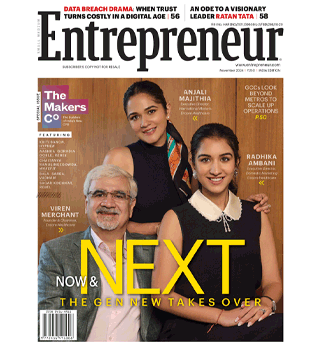Education
-
 Rishabh Khanna Mar 21 2024 - 6 min readTechnology today serves as a cornerstone for progress worldwide. Its role in our lives has notably transformed the educational landscape. This is especially true when we speak about its impact on teachers in smaller towns. Previously, a significant gap existed in access to advanced teaching tools and resources between urban and rural teachers. The landscape ...
Rishabh Khanna Mar 21 2024 - 6 min readTechnology today serves as a cornerstone for progress worldwide. Its role in our lives has notably transformed the educational landscape. This is especially true when we speak about its impact on teachers in smaller towns. Previously, a significant gap existed in access to advanced teaching tools and resources between urban and rural teachers. The landscape ... -
 Opportunity India Desk Mar 20 2024 - 3 min readRedefining education, India's first 3D - Hybrid online school, Dreamtime Learning School is aiming to get over 3000 students enrolled for the upcoming academic year 2024-2025. The school which is well known for its unique methodology and modern approach to education is also planning to recruit more than 500 skilled educators. The school, with its ...
Opportunity India Desk Mar 20 2024 - 3 min readRedefining education, India's first 3D - Hybrid online school, Dreamtime Learning School is aiming to get over 3000 students enrolled for the upcoming academic year 2024-2025. The school which is well known for its unique methodology and modern approach to education is also planning to recruit more than 500 skilled educators. The school, with its ... -
 Opportunity India Desk Feb 15 2024 - 4 min readThe success story of edtech unicorn Emeritus, a global leader in delivering accessible and affordable high-quality education, has now become a case study by the prestigious Harvard Business School (HBS). The company said earlier this week that ‘Emeritus: Achieving Impact, Providing Access’, traces the first phase of the company’s founding journey by co-founders Ashwin Damera ...
Opportunity India Desk Feb 15 2024 - 4 min readThe success story of edtech unicorn Emeritus, a global leader in delivering accessible and affordable high-quality education, has now become a case study by the prestigious Harvard Business School (HBS). The company said earlier this week that ‘Emeritus: Achieving Impact, Providing Access’, traces the first phase of the company’s founding journey by co-founders Ashwin Damera ... -
 Opportunity India Desk Feb 13 2024 - 4 min readProfessor Prem Vrat, Chairman and Board of Governors, IIT (ISM), Dhanbad, attended Entrepreneur India's 'Education Congress and Awards 2024' programme as a jury member. During this, he expressed his views on ‘How to make our education system sustainable and futuristic’. Here are highlights from his speech. Professor Prem Vrat said that ...
Opportunity India Desk Feb 13 2024 - 4 min readProfessor Prem Vrat, Chairman and Board of Governors, IIT (ISM), Dhanbad, attended Entrepreneur India's 'Education Congress and Awards 2024' programme as a jury member. During this, he expressed his views on ‘How to make our education system sustainable and futuristic’. Here are highlights from his speech. Professor Prem Vrat said that ... -
 Priyanka Tanwer Feb 08 2024 - 5 min readEntrepreneur India held an Edtech x Indian Education Congress & Awards 2024 on February 7. The event witnessed the participation of over 350 educationists and thought leaders who the insights into the world of education. The event started on 10.25 am with the panel discussion on Building A Symbiotic Relationship ...
Priyanka Tanwer Feb 08 2024 - 5 min readEntrepreneur India held an Edtech x Indian Education Congress & Awards 2024 on February 7. The event witnessed the participation of over 350 educationists and thought leaders who the insights into the world of education. The event started on 10.25 am with the panel discussion on Building A Symbiotic Relationship ...






 Share
Share














